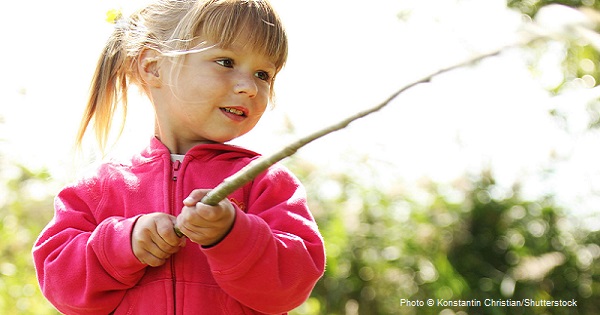|

Natural Play: Ditching Fancy Toys for Sticks and Mud
By Wendy Priesnitz
The more toys do, the less the child does. But as children ditch their plastic, electronic, and mechanical toys and play spontaneously with sticks, water, sand, plants, stones, and other things in their natural surroundings, all of their senses are stimulated, their minds are engaged, and their imaginations are developing.
This sort of exploration comes naturally to babies and toddlers. They have an urge to handle things, to gather, dump, sort, fill, and otherwise manipulate whatever is in their immediate environment.
Children wash up well so, as they get older, it’s okay for them to get muddy and wet while they continue to explore themselves and their environments in an open-ended way. As they are learning about science and the weather, building, and exploring, they are also burning energy, being healthy, and staying calm.
-----------------------------
For more articles about children and play, visit Child's Play Magazine.
-----------------------------
When I was a child, my favorite pastime was to build a “tent” with a blanket flung over a card table set up in our backyard. It was, at various times, a cave, a grand castle, a rabbit hole, and a tent at the beach...and I often holed up there for days examining the contents of my mother’s sewing basket or some other treasure, and later with my books.
When my daughters were little children, one of their favorite things to do was create similar dwellings for themselves and their dolls using large cardboard boxes. They furnished these houses with sofas made of logs; tables crafted from smaller cardboard cartons; dishes made from a variety of natural materials like acorn caps, shells, and pieces of bark; and arrangements of dried flowers.
They did accumulate their share of LEGO and Barbies, but we attempted to control the number of plastic toys they owned, in favor of wood and cloth. And they loved roaming in the field near our house, collecting rocks, sticks, seed pods, and bits of hay. Later, in the 1980s, I read about Elinor Goldschmeid’s theory of “heuristic play,” which favors the open-ended discovery activity of young children when they are given real objects to play with instead of toys.
You can start to replace your child’s plastic toys by creating a treasure basket full of real world objects. These can include shells, gourds, stones, pine cones, dried flowers, bricks, and sticks, as well as discarded household objects like cardboard tubes, boxes, funnels, measuring cups, wooden spoons, and mechanical bits and pieces. Babies love many of these objects too, so it’s never too young to begin these natural play activities, with some thought given to safety, of course.
Thinking beyond ready-made toys, you can help your children enjoy playing with the treasures that Nature has to offer in every season of the year. Let them go barefoot. Let them explore what happens when water from the outside tap mixes with dirt from a little garden patch of their own.
The advantages of natural play are priceless, not to mention the fun!
Wendy Priesnitz is the founding editor of Natural Child Magazine, the author of thirteen books, and a contributor to many others.
|
|

